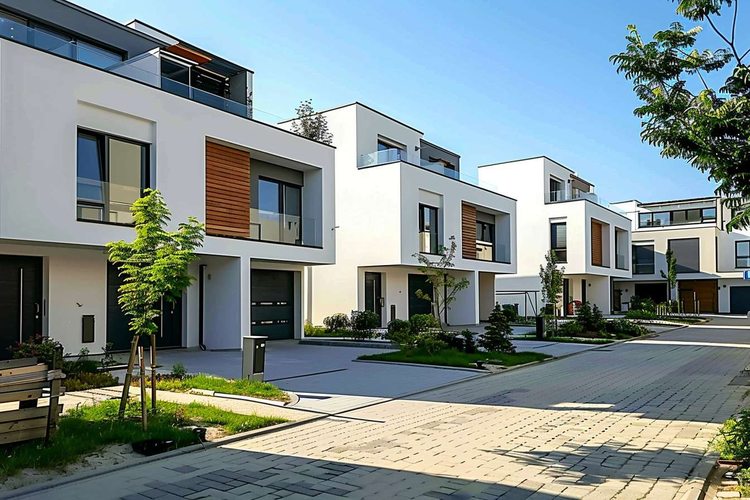How Home Value Is Determined: Factors & Appraisals
Discover what drives a home's market value and how professionals calculate it. This guide covers appraisals, location impacts, renovation ROI, valuation methods like CMAs and income approaches, and how market trends and interest rates shape property worth. Get practical tips to better estimate your property's value and make smarter real estate decisions.

Understanding the true worth of a home is vital whether youre buying, selling, refinancing, or simply monitoring your investment. Property value combines physical condition, neighborhood characteristics, and broader market forces. Below is a detailed look at how appraisals are performed, what most affects price, and the common methods used to estimate value.
How a professional home appraisal is completed
A licensed appraiser delivers an independent opinion of a property’s fair market value. The process usually begins with an on-site visit where the appraiser inspects the interior and exterior, measures square footage, notes the number of bedrooms and bathrooms, and assesses the overall condition. They catalogue notable features and any defects, then take photographs and document recent upgrades.
After the inspection, the appraiser researches comparable sales in the neighborhood, adjusts for differences between the subject property and comparables, and analyzes current market trends. They may factor in zoning issues, lot size, and any unique attributes that could increase or decrease value. The final product is a written appraisal report that lenders, buyers, and sellers often rely on to support financing and pricing decisions.
Why location is one of the most powerful value drivers
Location exerts a huge influence on price. Proximity to employment centers, public transportation, quality schools, parks, shopping, and healthcare increases desirability and typically raises values. Conversely, properties near high-traffic corridors, industrial zones, or areas with elevated crime statistics may command lower prices.
Micro-location matters too: a house on a quiet side street, one with a desirable view, or one that backs onto a greenbelt can be worth more than an otherwise identical home a block away. Planned infrastructure projects or neighborhood revitalization efforts can also shift value expectations, making location a continually changing variable.
How improvements affect resale value
Not every upgrade yields the same return. Kitchen and bathroom remodels are widely regarded as top investments because they directly influence buyer perception and functionality. Energy efficiency improvements, such as modern windows, a new HVAC system, or enhanced insulation, not only reduce running costs but also appeal to eco-conscious buyers.
Curb appeal matters: landscaping, a fresh coat of paint, and a maintained exterior can boost initial offers. However, customization that exceeds neighborhood norms or highly personalized luxury finishes may not be fully recouped. Homeowners should evaluate potential return on investment by considering local comparables and consulting professionals before undertaking major projects.
Valuation methods used to estimate home value
Several approaches are commonly used to determine a property’s worth, each suited to different property types and situations:
- Comparative Market Analysis (CMA): Often used by real estate agents, this method compares the subject property to similar recently sold homes in the area to estimate a market-based price.
- Cost Approach: This calculates value by estimating how much it would cost to rebuild the home from scratch, minus depreciation, plus the land value. It is useful for new construction or unique properties.
- Income Approach: Common for rental or investment properties, this method converts expected rental income into a present value, using capitalization rates or discounted cash flow models.
- Automated Valuation Models (AVMs) and online tools: These use algorithms and public data to produce quick estimates, but they may miss recent upgrades or local nuances.
| Appraisal Method | Provider Type | Key Features | Cost Estimation |
|---|---|---|---|
| Professional Appraisal | Licensed Appraiser | Detailed on-site inspection, Comprehensive report | $300 - $700 |
| Comparative Market Analysis (CMA) | Real Estate Agent | Market-based comparison, Less formal than appraisal | Often free or low-cost |
| Online Valuation Tool | Various Websites | Quick estimate, Uses public data | Free - $20 |
| Home Inspection | Certified Home Inspector | Detailed property condition report | $300 - $500 |
Prices, rates, or cost estimates mentioned in this article are based on the latest available information but may change over time. Independent research is advised before making financial decisions.
How market conditions influence appraisals
Supply and demand dynamics have a direct effect on valuations. In a seller’s market, where buyer demand outpaces available homes, appraisers will often see higher comparable sale prices and may reflect rising values. In a buyer’s market with abundant inventory, values may soften as sellers compete for purchasers.
Macro factors such as interest rates, employment levels, and overall economic health also change buyer affordability and confidence. Appraisers incorporate recent sales, the speed at which homes are selling, and seasonal patterns to ensure their valuation represents current market realities.
Practical guidance for homeowners and buyers
- Collect documentation of upgrades and warranties to share with appraisers or agents. This can help justify adjustments for improvements.
- Request a pre-listing appraisal or a competitive market analysis before setting a sales price.
- Be mindful of over-improving for your neighborhood; check nearby sale prices to gauge what buyers will realistically pay.
- Stage and maintain the property to improve perceived value and reduce negotiation hurdles.
- Consult both an agent and a licensed appraiser when higher-stakes decisions are involved, such as refinancing or listing in a volatile market.
Knowing how value is calculated and which factors most influence price empowers better decisions. Whether preparing to sell, buying a home, or evaluating renovations, a clear understanding of appraisals, location effects, and market drivers will help you achieve the best financial outcome.






